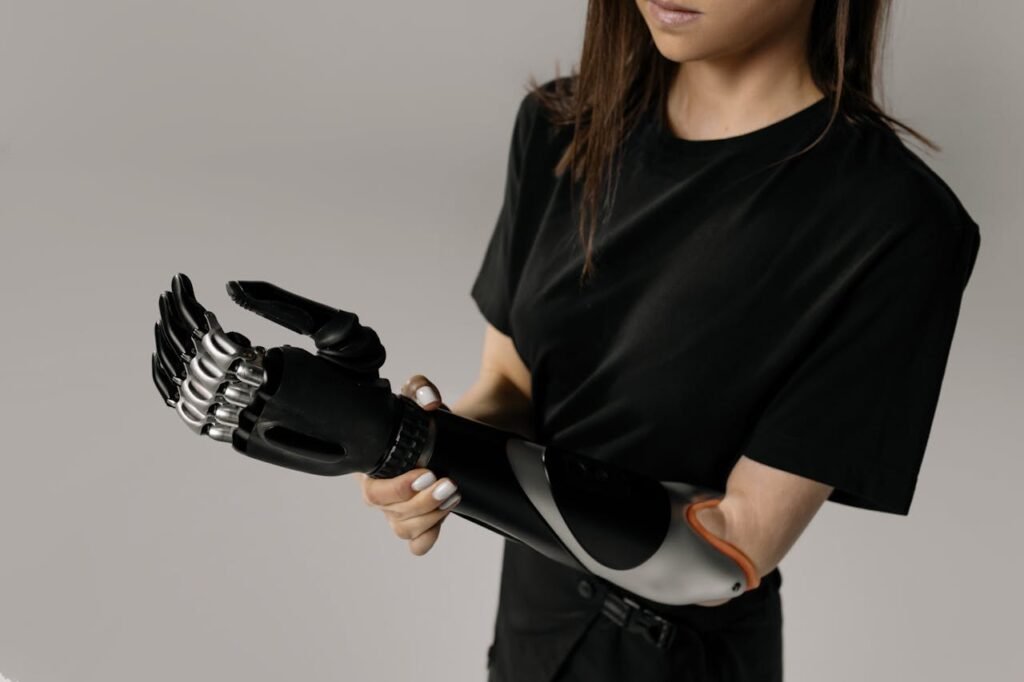Selecting the right prosthetic limb is a decision that can profoundly impact your daily life, mobility, and independence. It’s not just about functionality—it’s about finding a prosthetic that integrates seamlessly into your lifestyle, supports your goals, and helps you embrace your potential. From active individuals who enjoy outdoor adventures to those seeking simplicity and comfort in everyday tasks, the choice of a prosthetic must align with your unique needs.
This guide delves into the factors that help determine the ideal prosthetic limb for your lifestyle, offering actionable insights and practical advice to make the decision-making process smoother. By understanding the key aspects of prosthetic selection, you can confidently choose a device that enhances your quality of life and empowers you to thrive.
Understanding Your Lifestyle
Your lifestyle is the foundation of your prosthetic choice. Every individual has different routines, hobbies, and physical demands, all of which influence the type of prosthetic that will work best for them. Taking a close look at your daily activities, long-term goals, and personal preferences is the first step in narrowing down your options.
Assessing Daily Activities
Start by considering the activities that make up your typical day. For example, individuals who primarily stay at home might prioritize a prosthetic that offers comfort and ease of use for light activities. On the other hand, someone who enjoys running, hiking, or sports will need a device designed for high performance and durability.
For businesses, helping users evaluate their daily routines through guided consultations or activity assessments can ensure that the prosthetic recommendation is tailored to their lifestyle.
Digital tools, such as apps that track movement or simulate prosthetic performance in different scenarios, can also add value during this stage.
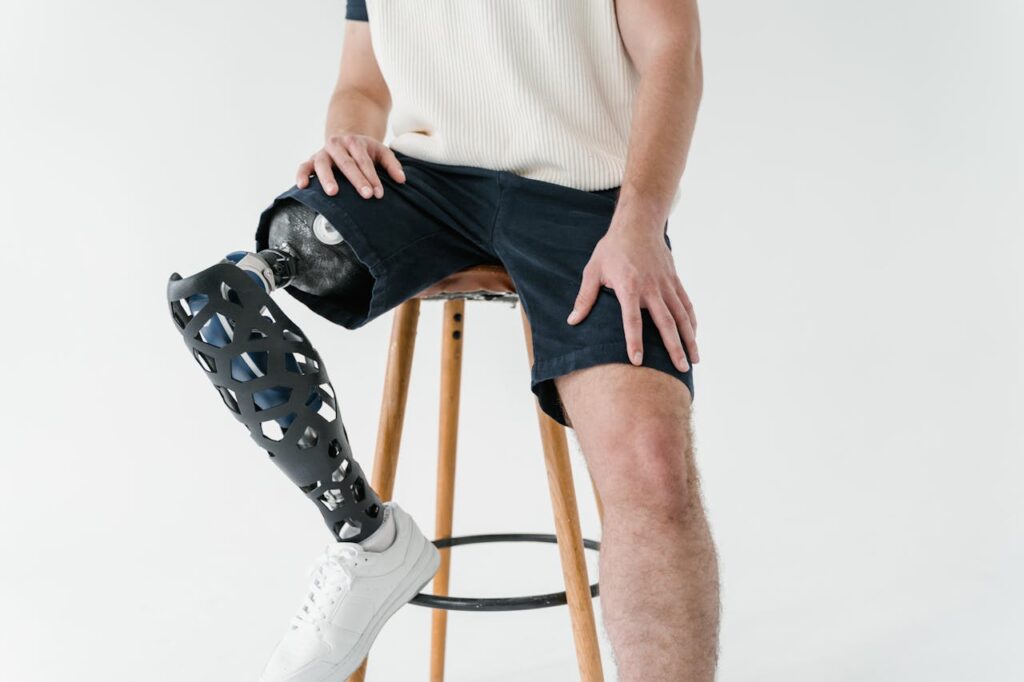
Matching Prosthetic Features to Your Needs
Once you have a clear understanding of your lifestyle, the next step is to identify the features that align with your specific needs. Modern prosthetics offer a wide range of functionalities, from basic designs to advanced technologies, and choosing the right combination of features ensures that your device enhances your daily life.
Mobility and Movement
Mobility is a central consideration for most users, particularly those with lower-limb amputations. The type of terrain you navigate, the distances you travel, and the activities you engage in will all influence the level of mobility your prosthetic should provide.
For instance, a basic mechanical foot may be sufficient for walking on flat surfaces, while a dynamic response foot or energy-return design might be better for active users who tackle uneven terrain or high-impact activities.
Similarly, microprocessor-controlled knees or ankles can adapt to changes in speed or incline, offering greater stability and confidence for users who are constantly on the move.
For businesses, offering educational resources that explain the benefits of different mobility features can empower users to make informed decisions.
Demonstrations or user testimonials showcasing how these features perform in real-world settings can also build trust and confidence.
Grip and Dexterity
For upper-limb prosthetics, grip strength and dexterity are key factors to consider. Users who require precise control for tasks like typing, cooking, or using tools may benefit from myoelectric hands with multiple grip patterns.
Conversely, individuals who need a reliable but simple design for occasional use might prefer a lightweight mechanical hand or hook.
Understanding how the user interacts with objects in their daily life allows businesses to recommend prosthetics that optimize functionality.
Highlighting innovative technologies, such as sensory feedback systems that mimic touch, can also demonstrate how modern prosthetics bridge the gap between artificial limbs and natural movement.
Customizing for Comfort and Fit
Comfort is one of the most important aspects of selecting a prosthetic limb that matches your lifestyle. A well-fitted prosthetic not only reduces physical discomfort but also enhances usability, ensuring that the device becomes a seamless part of your daily routine. Achieving this level of comfort requires a focus on proper fit, materials, and adjustability.
The Importance of a Perfect Fit
A prosthetic limb must fit securely and comfortably to prevent irritation, pressure points, or instability. The socket, which connects the prosthetic to the residual limb, is the most critical component in achieving a proper fit. A poorly fitted socket can lead to pain and even limit how much you use your prosthetic.
For businesses, emphasizing precision in the fitting process is essential. Technologies like 3D scanning and digital modeling allow for highly customized sockets that conform perfectly to the user’s anatomy.
Offering trial periods with test sockets can further refine the fit, ensuring users are completely satisfied before committing to the final design.
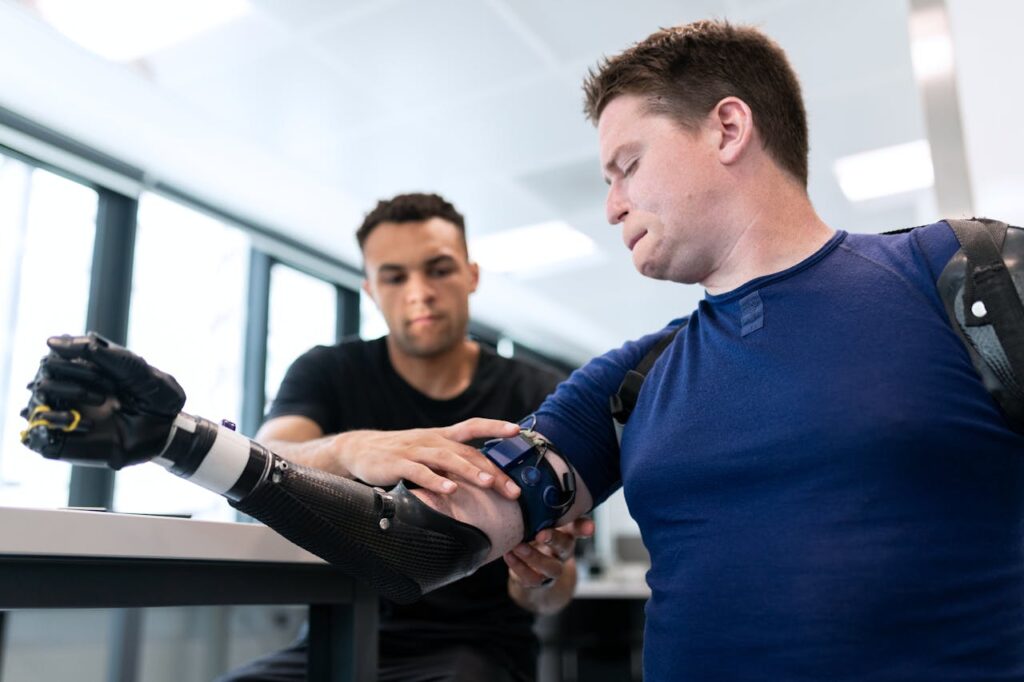
Prioritizing Material Choices
The materials used in a prosthetic greatly influence its comfort. Lightweight materials such as carbon fiber and titanium reduce strain on the body, making the prosthetic easier to wear for extended periods.
Additionally, hypoallergenic liners and breathable materials help prevent skin irritation, especially for users with sensitive skin or those living in warm climates.
Educating users about material options and their benefits ensures they make a choice that aligns with their comfort needs. Businesses that offer a variety of materials at different price points can cater to a wider audience, ensuring no compromise between comfort and affordability.
Adjustable Features for Evolving Needs
As your lifestyle or physical condition changes, your prosthetic should be able to adapt. Adjustable sockets, modular components, and flexible suspension systems allow for on-the-go modifications, ensuring continued comfort and usability.
For instance, a suspension system with adjustable straps or air bladders can accommodate swelling or changes in residual limb size, preventing discomfort during prolonged use.
Highlighting these features in consultations or marketing materials demonstrates a commitment to user satisfaction and long-term value.
Aesthetic and Psychological Considerations
While functionality and comfort are often the primary focus, the appearance of a prosthetic and its impact on a user’s confidence should not be overlooked. Prosthetic limbs are not just tools—they’re personal extensions that reflect individuality and style.
Designing for Self-Expression
For many users, a prosthetic limb is an opportunity to make a statement. Customizable options such as cosmetic covers, artistic designs, or personalized finishes allow users to express their personality and preferences.
Whether it’s matching skin tone for a natural look or opting for bold colors and patterns, aesthetics can play a powerful role in how users perceive and embrace their prosthetic.
Businesses that offer a range of aesthetic options can attract users seeking more than just functionality. Collaborating with artists or offering customizable templates enables users to create prosthetics that feel uniquely theirs. Highlighting these options in your product line can help your business stand out in a competitive market.
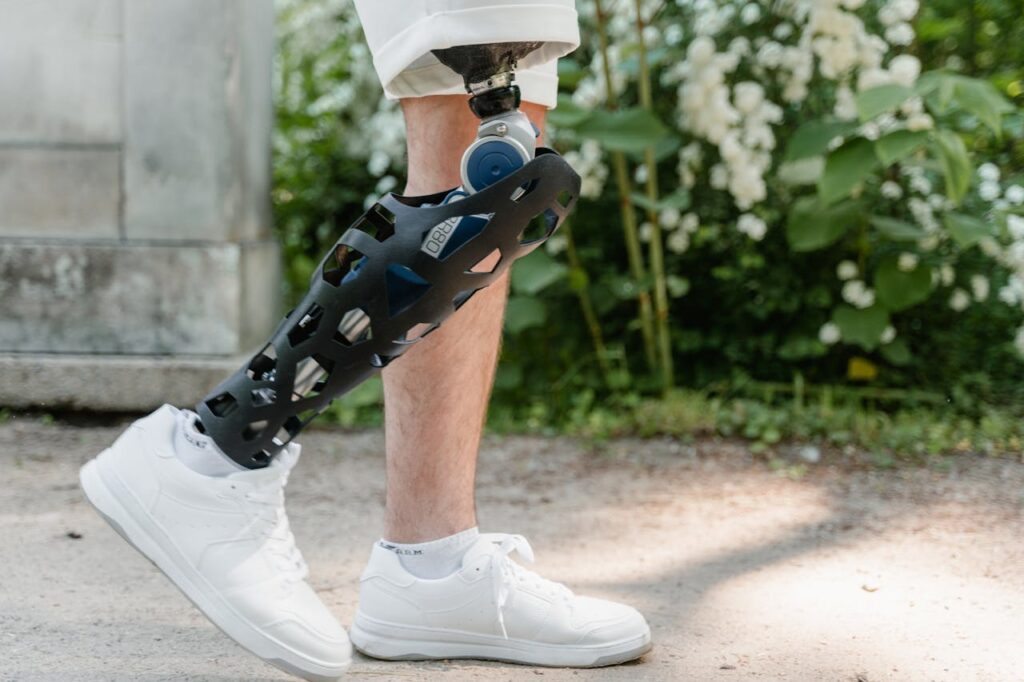
Building Confidence Through Design
The psychological impact of wearing a prosthetic cannot be underestimated. A well-designed prosthetic that aligns with a user’s identity can significantly boost self-esteem and reduce self-consciousness.
Conversely, a prosthetic that feels overly artificial or doesn’t meet aesthetic expectations might deter users from wearing it consistently.
For businesses, focusing on user-centered design that incorporates both functionality and aesthetics ensures a holistic approach. Including feedback from users in the design process helps identify features that resonate emotionally and practically, resulting in prosthetics that are both effective and empowering.
Maintenance and Longevity
A prosthetic limb is a significant investment, and ensuring its longevity is a key consideration for users. Regular maintenance, durability, and access to affordable replacement parts are essential for keeping the prosthetic in optimal condition and minimizing long-term costs.
Choosing Durable Designs
Durability is especially important for active users or those who rely on their prosthetic for demanding tasks. Reinforced materials, corrosion-resistant coatings, and sturdy joint mechanisms ensure that the prosthetic can withstand wear and tear over time.
For businesses, offering warranties or durability certifications builds confidence in the product. Providing clear guidance on how to maintain the prosthetic—such as cleaning routines or inspections—ensures users can extend the lifespan of their device.
Supporting Users with Maintenance Services
Providing accessible maintenance services is crucial for user satisfaction. Regular check-ups, adjustments, or repairs help users maintain the comfort and functionality of their prosthetic.
Businesses that include maintenance packages or offer subscription plans for services like recalibration or part replacements create a sense of reliability and ongoing support.
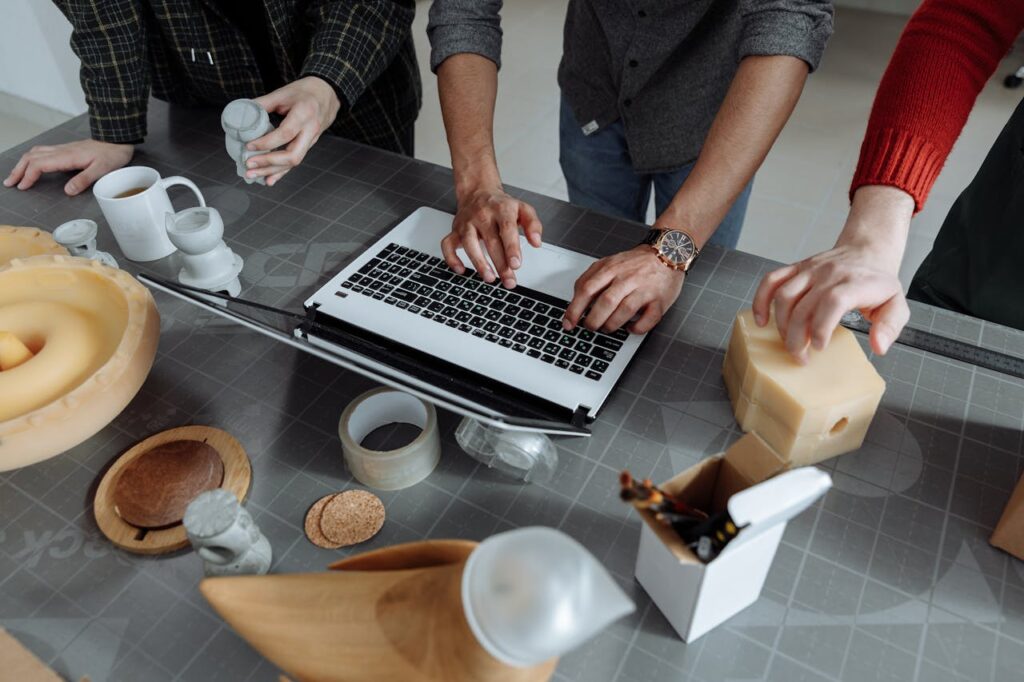
Considering Your Activity Level
Your activity level is a critical factor in selecting a prosthetic limb that matches your lifestyle. Whether you lead a quiet, relaxed life or are constantly on the go, your prosthetic must align with your physical demands to ensure it supports your mobility, independence, and overall well-being.
Low-Activity Lifestyles
For individuals with a low-activity lifestyle, such as those who primarily stay at home or engage in light physical tasks, simplicity and comfort are key. A prosthetic designed for this level of activity typically prioritizes ease of use and stability.
For example, a mechanical lower-limb prosthetic with a basic foot design may be ideal for walking on flat surfaces indoors. Similarly, an upper-limb prosthetic with a lightweight hook or simple hand can provide the necessary support for light tasks like holding objects or assisting with balance.
For businesses, catering to this demographic means emphasizing affordability, long-term comfort, and low-maintenance designs. Educating users about how these prosthetics meet their daily needs builds confidence in their decision.
Moderate Activity Lifestyles
A moderate activity level often includes a mix of walking, standing, and occasional physical tasks such as gardening, light exercise, or part-time work. Prosthetics for this group must strike a balance between comfort and versatility, offering enough adaptability to handle varying demands.
For instance, a lower-limb prosthetic for moderate activity might feature a dynamic ankle that provides stability on uneven terrain. Similarly, an upper-limb prosthetic with multiple grip patterns can support activities ranging from cooking to lifting light objects.
Businesses can serve this audience by offering versatile prosthetics with modular designs, enabling users to adjust their devices based on their activities. Highlighting how these features enhance mobility and reduce fatigue positions your products as practical and user-focused.
High-Activity Lifestyles
For highly active individuals, such as athletes, outdoor enthusiasts, or manual laborers, performance and durability are paramount. Prosthetics designed for this level of activity must withstand heavy use, high impact, and varied environmental conditions.
A high-performance lower-limb prosthetic might include a carbon-fiber blade for running or an advanced microprocessor knee that adjusts to changes in speed and incline.
Upper-limb prosthetics for this group may feature reinforced joints and strong grips for tasks like climbing or lifting heavy loads.
Businesses that invest in advanced materials and cutting-edge technology can appeal to high-activity users. Showcasing real-life examples of active individuals thriving with these prosthetics demonstrates their potential and builds trust.
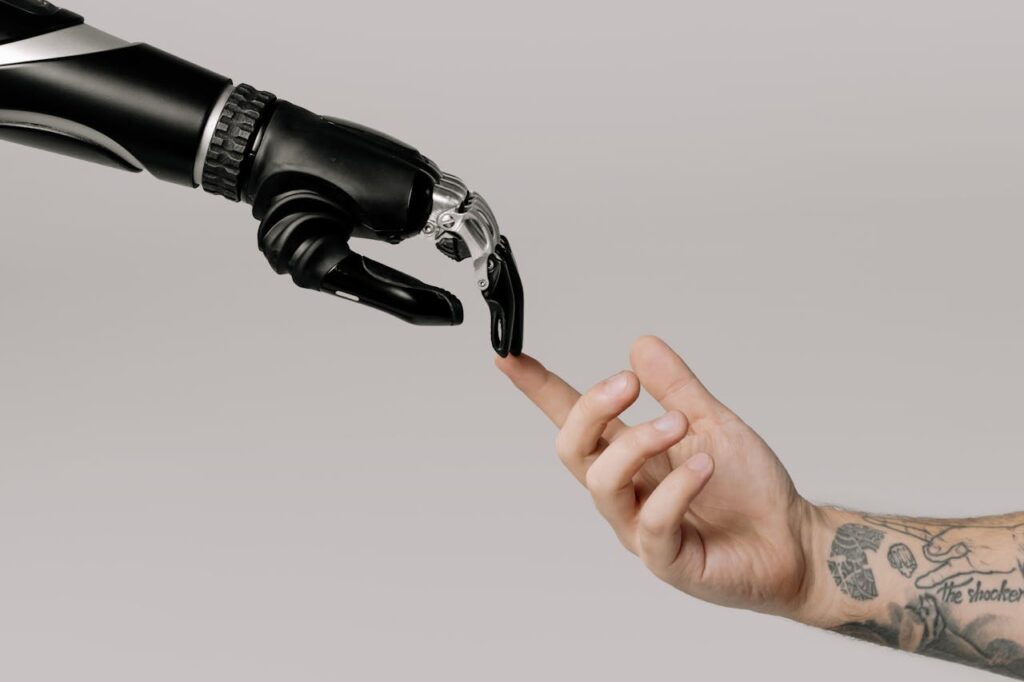
Aligning with Your Long-Term Goals
Choosing a prosthetic limb isn’t just about addressing immediate needs—it’s about ensuring the device supports your aspirations and evolves with you over time. For many users, their lifestyle, health, and goals may change, requiring their prosthetic to adapt accordingly.
Planning for Lifestyle Changes
Whether it’s transitioning to a more active lifestyle, pursuing a new career, or engaging in hobbies, your prosthetic should be versatile enough to accommodate these shifts. Modular systems or upgradeable components provide the flexibility to meet evolving demands.
For example, a user might start with a basic prosthetic for daily mobility and later add features like energy-return feet or adaptive grip patterns as their activity level increases.
Businesses that emphasize adaptability in their products and marketing materials position themselves as long-term partners in the user’s journey.
Supporting Aspirations and Ambitions
For some users, their prosthetic is a means to pursue ambitious goals, such as returning to sports, performing professionally, or exploring new adventures. Collaborating with users to understand and support these aspirations ensures their prosthetic aligns with their vision.
Businesses can enhance this alignment by offering consultations that explore long-term objectives, creating customized solutions tailored to specific activities or professions.
For example, designing a prosthetic for a musician, artist, or athlete requires attention to both technical and creative details. Highlighting such specialized solutions reinforces the company’s expertise and commitment to meeting diverse needs.
Fostering Confidence Through Community
The journey to finding the right prosthetic isn’t one users should navigate alone. Connecting with others who share similar experiences can provide encouragement, advice, and a sense of belonging. For businesses, fostering these connections creates an added layer of value beyond the prosthetic itself.
Creating Support Networks
Online forums, local events, or social media groups dedicated to prosthetic users can serve as platforms for knowledge-sharing and camaraderie. Businesses that host or sponsor such communities show a commitment to user empowerment and inclusivity.
For example, organizing webinars featuring success stories, expert advice, or live demonstrations can inspire users and highlight how your prosthetics enable real-world achievements.
Encouraging users to share their experiences fosters a sense of pride and motivates others to embrace their journey.
Ensuring a Seamless Integration Into Daily Life
A prosthetic limb that truly matches your lifestyle should feel like an extension of your body, seamlessly integrating into your daily activities and routines. Achieving this requires a combination of user-centered design, personalized training, and ongoing support.
The Role of Personalized Training
Adapting to a new prosthetic limb takes time and practice. Personalized training programs can significantly enhance the user’s confidence and ability to use their prosthetic effectively.
For example, lower-limb prosthetic users may need guidance on walking on different terrains, climbing stairs, or navigating uneven surfaces. Similarly, upper-limb users might benefit from training in tasks that require precision, like writing or handling delicate objects.
For businesses, partnering with rehabilitation specialists or offering in-house training services adds tremendous value to the prosthetic experience.
Providing users with access to virtual tutorials, mobile apps, or instructional videos ensures that support is available whenever and wherever it’s needed.

Simplifying the Transition Process
The transition to using a prosthetic limb can be overwhelming, particularly for first-time users. Simplifying this process through clear communication, accessible resources, and a step-by-step approach ensures that users feel supported every step of the way.
For instance, businesses can create a “Welcome Kit” for new users that includes detailed guides on prosthetic care, tips for adapting to daily life, and contact information for support services. This proactive approach fosters trust and reduces the anxiety associated with the adjustment period.
Encouraging Incremental Progress
Users may need time to build their skills and confidence with their prosthetic limb. Encouraging incremental progress—such as starting with basic tasks before moving to more complex activities—ensures they don’t feel overwhelmed.
For businesses, framing this journey as a series of achievable milestones can enhance user satisfaction. For example, providing a checklist of activities to practice over the first few weeks helps users measure their progress and celebrate small victories along the way.
The Importance of Ongoing Support
The relationship between a user and their prosthetic provider shouldn’t end after the initial fitting. Long-term support is critical for maintaining the functionality and comfort of the prosthetic, as well as adapting to any changes in the user’s lifestyle or physical condition.
Regular Follow-Ups and Adjustments
As a user’s body changes or their activity level evolves, periodic adjustments to the prosthetic may be necessary. Offering regular follow-up appointments ensures that the device continues to meet the user’s needs.
For businesses, establishing a schedule for routine check-ups—whether in person or through virtual consultations—demonstrates a commitment to ongoing care.
These sessions provide an opportunity to address minor issues before they escalate and to educate users about maintenance practices.
Accessible Maintenance and Repair Services
Even the most durable prosthetics require occasional maintenance or repairs. Ensuring that these services are affordable, convenient, and efficient builds trust and loyalty among users.
Businesses can differentiate themselves by offering transparent pricing, quick turnaround times, and options like loaner prosthetics during repairs.
Providing a dedicated support line or online portal for scheduling maintenance appointments further streamlines the process, making it easier for users to stay on top of their prosthetic’s upkeep.
Keeping Users Informed About Advances
Prosthetic technology is constantly evolving, with new features and materials emerging regularly. Keeping users informed about these advancements—whether through newsletters, webinars, or product showcases—empowers them to explore upgrades or enhancements that might benefit their lifestyle.
For example, introducing users to a new lightweight material or a modular component that adds functionality can spark interest and encourage long-term engagement with your brand.
Building a Partnership of Trust
Choosing a prosthetic limb is a deeply personal decision, and users rely on their provider not just for a product but for guidance, support, and expertise. Businesses that prioritize trust and transparency in every interaction—whether through consultations, product offerings, or after-sales services—can cultivate lasting relationships with their customers.
Listening to User Feedback
Actively seeking and responding to user feedback demonstrates that your business values the experiences and opinions of its customers. Conducting surveys, hosting focus groups, or encouraging reviews helps identify areas for improvement and ensures your offerings remain aligned with user needs.
For example, feedback about a specific feature—such as the fit of a socket or the usability of a grip mechanism—can inform future designs, enhancing both product quality and user satisfaction.
Fostering a User-Centric Culture
A user-centric culture places the individual’s needs and goals at the heart of every decision. For businesses, this means going beyond selling a product to offering a comprehensive experience that supports the user’s journey from start to finish.
Whether it’s providing personalized recommendations, celebrating user achievements, or offering resources for continued growth, fostering a culture of care and connection strengthens your brand’s reputation and impact.
Conclusion
Choosing a prosthetic limb that matches your lifestyle is a journey of discovery, empowerment, and partnership. It’s about finding a device that aligns with your daily routines, supports your long-term goals, and enhances your confidence and independence.
For users, the process begins with understanding your unique needs and exploring the features and options available. For businesses, it’s an opportunity to deliver more than just a product—to provide a life-changing solution backed by support, innovation, and empathy.
By focusing on comfort, functionality, adaptability, and ongoing care, both users and providers can create prosthetic experiences that not only meet expectations but exceed them.
Together, this collaboration ensures that prosthetics are not just tools, but transformative devices that open doors to new possibilities and a better quality of life.



